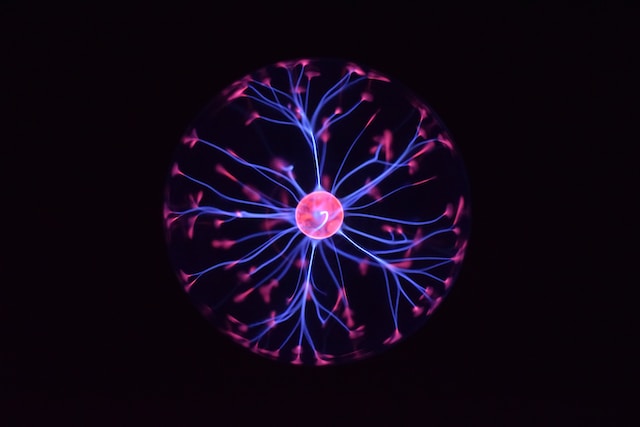Cryopreservation, the practice of freezing and preserving legally dead people in liquid nitrogen temperatures, has largely been concentrated in the US and Europe. However, in 2015, China too joined the club with the establishment of the Shandong Yinfeng Life Science Research Institute (Yinfeng). Founded under the auspices of the Yinfeng Biological Group Ltd., this institute is engaged in research related to cryopreservation, resuscitation and the functioning and maintenance of tissues, organs and humans. It is the first of its kind, and presently the only such institute in China, offering cryonic suspension and storage services.
In 2015, Du Hong was the first Chinese person to be cryopreserved. She opted to have her brain cryopreserved after death at Alcor. Subsequently, with the emergence of Yinfeng, Zhan Wenlian became the first person to be cryopreserved in China. Her body was prepared for cryopreservation at the Yinfeng Life Science Research Institute after she died of lung cancer. Since then, there have been a dozen people cryopreserved under the aegis of Yinfeng. Read on to find out how Yinfeng is pioneering the cryonics movement in China.
Cryonics at Yinfeng
Yinfeng believes that the best way to achieve cryopreservation is to collaborate with experts in the medical field. With the increasing acceptance with respect to cryonics, their standby team includes medical professionals such as EMTs, nurses, among others. This provides the much needed expertise to carry out the different steps in cryopreservation.
Yinfeng’s “Whole Body Cryopreservation Program” took off in 2016. The cryomedicine team consists of a collection of scientists, researchers and trained medical professionals. Being the premier cryonics institute in China, everything had to be built from scratch, and it is currently a full-service facility, capable of providing long-term cryonic storage services, along with maintaining client relationships with the help of an administrative team. According to Li Qinping, the publicity director at the Yinfeng Institute, around 60 people became members in 2019, by signing up to be cryopreserved.
Novel approach
The most interesting aspect of cryopreservation at Yinfeng is their use of the extra-corporeal membrane oxygenation (“ECMO”) procedure, which enables blood flow in the body when the heart and lungs have stopped functioning. Integrating the ECMO procedure in cryopreservation has presented new possibilities. An ECMO machine is used to bypass the circulatory system, and take out the deoxygenated blood from the patient’s body. This is then run through a filter to remove carbon dioxide and other toxins, cooled and circulated back into the body. An ECMO team stationed with the standby team begins this procedure as soon as the patient is clinically pronounced dead.
The patient, along with the ECMO machine are then transferred to the special ambulance where further cryopreservation procedures are carried out. According to Aaron Drake, a former director of research at Yinfeng, this provides for a seamless process, which helps in the timely conduct of perfusion, thereby avoiding ischemic injuries.
The patient is then placed in the “cool-down box” which, under computer-controlled conditions, uses liquid nitrogen to reduce body temperature. The next steps leading to cryopreservation are conducted on the “cryonics surgical table”, a cold table running on electricity and liquid nitrogen, which helps the surgeons control the environment of the patient during the whole process.

Alongside human cryopreservation, Yinfeng also focuses on the cryopreservation of cord-blood stem cells, which can be used to provide therapeutic hypothermia treatments throughout an individual’s life. This covers cancer and anti-aging treatments.
Support from other areas
Another factor that can boost the Yinfeng cryonics program is the support that cryonics receives in China from all quarters. In the United States, Alcor has faced stringent opposition from the state authorities, as seen in the cryopreservation of Dora Kent. In stark contrast to this, Yinfeng is maybe the only cryonics group at the moment that is supported by the government and embraced by mainstream researchers.
Although there is no Chinese law regulating cryonics practice, at the same time, it is not prohibited either. In fact, cryopreservation at Yinfeng is carried out on the Civil Law principle that “what the law does not prohibit can be done”. The bodies currently preserved at Yinfeng are classified as “donation to technological research”.
Alongside government support, the Chinese people appear to be more accepting towards cryopreservation than in the West. According to Professor Huang Wei, “Chinese people have always been interested in body preservation and life extension. Cryonics is a new option from the West which will certainly interest those who can afford it”. This statement can be evidenced by the enthusiasm shown by Zhan Wenlian’s husband, Gui Junmin, to sign up for cryopreservation. Gui, along with his son, have both opted to be cryopreserved at Yinfeng when their natural lifespan runs out.
Complementing such decisions, Yinfeng also promotes family cryopreservation, and has the practice of building “family dewars”, which can store an entire family together. Therefore, the prospects of a whole family “reuniting” if and when revival from cryopreservation becomes possible, will motivate more people to sign up for it.
Moreover, the Chinese have less religious barriers with respect to cryonics, than the Westerners do. This, according to Aaron Drake, will accelerate and aid in the development of cryonics in China. On the other hand, Westerners believe in life after death, so cryonics can be viewed as something that does not fit with God’s plan.

Lastly, but probably the most important and interesting aspect, is the practice of honoring the Chinese traditions and rituals. The cryonics team at Yinfeng conducts a ceremony for the family of the person who is being cryopreserved. As a part of this, the family is allowed to witness some of the procedures, which gives them closure, and is an important aspect of human relations. The team members also convey their “thanks” to the individual who has donated their body to cryonics, after the cryopreservation procedure. This is done with a traditional Chinese bow, as a mark of respect, honor and gratitude. By embedding the traditional and human aspects, cryopreservation is expected to grow rapidly in China.
All these factors will help the Yinfeng cryonics and life extension program make significant strides. Although resurrection after cryopreservation is still a far-fetched possibility, the field of cryonics has great potential. For instance, in the 1900s, people died from influenza, tuberculosis, and heart attacks, however, fast forward to the 21st century, and these illnesses can easily be cured, thanks to modern medicine. In the same way, it is hoped that cryopreservation can achieve the desired results in a few decades from now, with advancements in medicine and technology.















